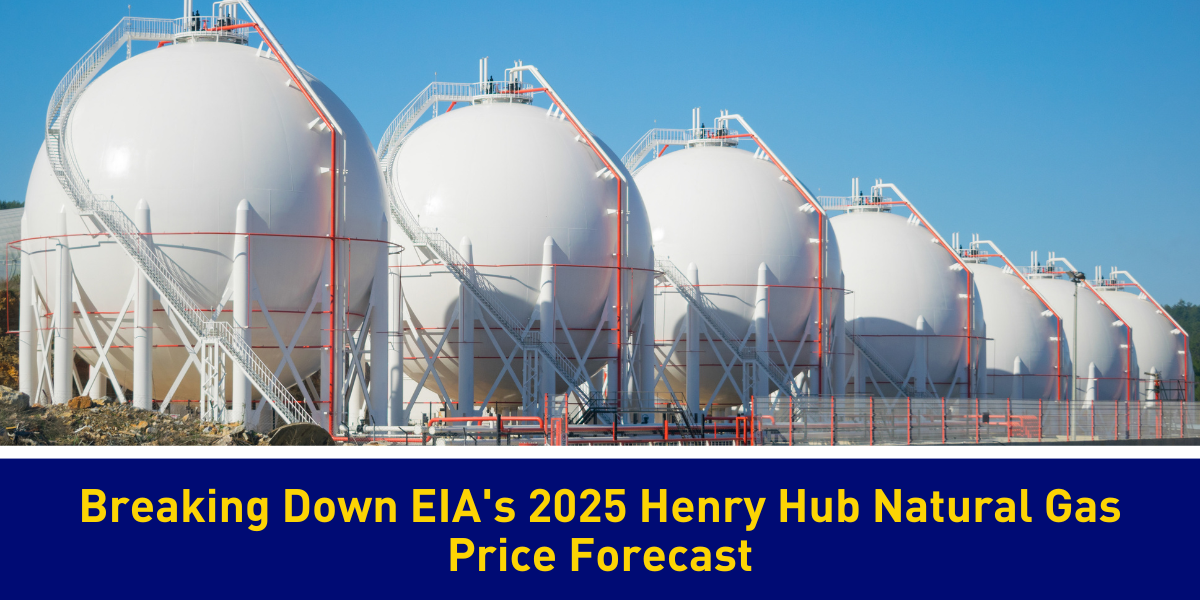What Energy Buyers Need to Know
The U.S. Energy Information Administration (EIA) recently released its latest Henry Hub natural gas price forecast, providing crucial insights for procurement professionals and energy decision-makers. According to the EIA, natural gas prices are projected to average $2.70 per million British thermal units (MMBtu) in 2025—a modest adjustment reflecting a stable yet dynamic market environment.
Key Drivers of the 2025 Forecast
1. Robust Domestic Production
Production levels in key regions like the Permian Basin and Appalachia remain strong. Technological advancements and efficient drilling continue to boost output, keeping supply abundant and competitive.
2. LNG Export Growth
Liquefied natural gas (LNG) exports are expanding steadily, providing an essential outlet for U.S. gas producers and connecting the domestic market to global demand centers. However, increased LNG capacity has yet to significantly tighten the domestic supply-demand balance.
3. Storage Levels Above Average
Natural gas storage inventories remain comfortably above the five-year average, thanks in part to mild winter conditions. This surplus has helped ease concerns about potential price spikes in the short term.
4. Weather & Geopolitical Variables
While forecasts are favorable, variables like extreme weather events or geopolitical shifts affecting global LNG flows could still influence short-term price volatility.
Implications for Energy Procurement
For procurement specialists and businesses reliant on natural gas, this stable pricing forecast presents an opportunity:
- Lock in Long-Term Contracts: The current environment favors negotiating longer-term agreements at favorable rates.
- Monitor Global LNG Demand: Keep an eye on export trends, especially as geopolitical factors and European/Asian demand may shift global flows.
- Diversify Energy Mix: While natural gas prices are stable now, integrating renewables and exploring emerging nuclear options will help hedge future risks.
Related Resources
- Energy Market Outlook 2025: Pillar Page Overview
- Natural Gas Storage Trends & EIA Production Insights (Coming Soon)
Ready to build a smarter procurement strategy? Contact Brilliant Source Energy today to discuss locking in stable rates and diversifying your energy portfolio.






